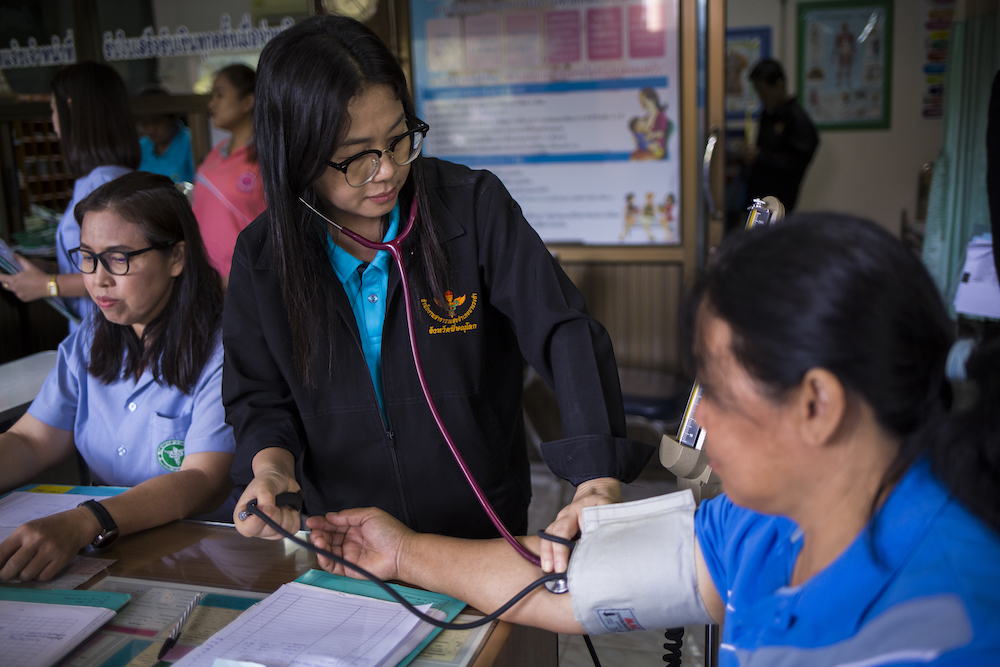
The term “women’s health” is often associated with maternal, sexual and reproductive health. But women’s health is shaped by so much more. It’s shaped by the environment we live in, the food we eat and the air we breathe. In short: women’s health is public health. And we cannot achieve the former as long as gender equity is not at the core of public health policies and practice.
This year, on International Women’s Day, we need to reimagine women’s health, and work to remove the obstacles to healthy and safe environments that face women of all ages.
Noncommunicable diseases (NCDs)—such as heart disease, cancer and diabetes—are responsible for two in every three deaths among women each year, and present the greatest threat to women’s health. Women also disproportionately bear the indirect burden of NCDs as the caregivers of sick family members.
Governments have tools to prevent diabetes and heart disease, such as front-of-package warning labels on ultra-processed foods high in salt, sugar and fat, and regulations eliminating trans fats from the food supply—but they need the incentive and political will to use those tools. Vital Strategies works with local partners in several countries in Latin America that are building public support for food warning labels. In South Africa, where obesity is a growing concern, our efforts led to the government introducing a tax on sugary beverages—the first of its kind in Africa.
Household air pollution poses enormous health risks for women. Access to clean fuels for cooking and heating could prevent 2.3 million deaths annually. And as the number of male smokers falls worldwide, tobacco companies are targeting women as a growth market, with tobacco ads that associate the use of these deadly products with prestige, glamor and even as a means of weight control.
Women’s births and deaths—are also far less likely to be registered within civil registration and vital statistics systems (CRVS), and thus are invisible. These national systems are the gateway for citizens to exercise lifelong rights, including access to education and health care. We’ve also seen how countries can use technology to erase physical, financial and social barriers to registration. In Bangladesh, Vital Strategies supported the government to boost registration of births and deaths by engaging frontline medical workers. Within a few years, birth and death registrations rose from 50% to 83%, and from under 10% to 90%, respectively. This not only allows women to be seen and counted, but grants governments a clearer picture of where resources are most needed.
Gender equity in health is a critical step to strengthening public health systems. When women are healthier, families and communities are healthier.
—José Luis Castro, President and CEO, Vital Strategies
Get Our Latest Public Health News
Join our email list and be the first to know about our public health news, publications and interviews with experts.
Expert Focus
Opinion: The COVID-19 gender mortality gap—is civil registration the answer?
Interrupting Sexism in the Workplace and Beyond
What is Women’s Health? It’s More Than You Think
CEO Perspective
Global Health Depends on Gender Equality
Global Policy
The Power of Data to Reveal Health Inequities
New Research Underscores that Childhood Stunting is a Global Health Threat
To Better the Lives of Women and Girls, Improve CRVS Systems
Vital Stories
Elevating Women, Trans People and Queer People in Harm Reduction: Project SAFE
Women Leaders at the Center of the COVID Response
Engaging Women in Viet Nam to Champion Smoke-Free Places
Advancing LGBTI Rights in Peru Through Civil Registration Reform
Listen
Public Health Power Hour: What If…Women’s Health in Africa Centered Gender Equity?